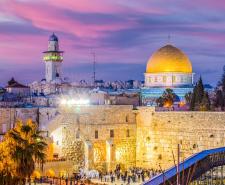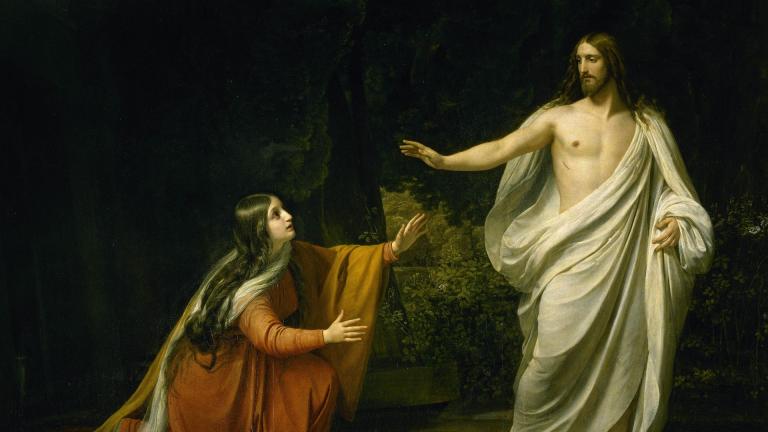
Read more about Popular Culture

Mary Magdalene is one of the most divisive figures in theological literature. Depending on who you ask, she's either a devoted disciple or a reformed prostitute. Popular films like The Da Vinci Code even suggest she was Jesus's lover — a claim that has absolutely no basis in Christian texts.
If you're anything like the team at Sky History, you're tired of the myths and speculations obscuring the truth. To set the record straight, we've rounded up eight lesser-known facts about Mary Magdalene that separate fact from fiction.
This misunderstanding dates back to 591 AD with Pope Gregory I. During a sermon, he combined three women mentioned in the New Testament into one figure: Mary Magdalene, an unnamed 'sinful woman' and Mary of Bethany.
Unfortunately, the 'sinful woman' comment stuck. The image of Mary as a fallen woman and redeemed sinner has since been echoed in films like King of Kings, Jesus Christ Superstar and The Last Temptation of Christ.
Contrary to popular belief, Mary's surname isn’t Magdalene. Instead, 'Magdalene' refers to her birthplace, meaning 'from Magdala'. This was common practice in ancient history - surnames usually referred to birthplaces or occupations.
Magdala was a small fishing town on the western shore of the Sea of Galilee. Today, the site is called Migdal, which means 'tower' in Hebrew.
Some of the confusion around the prostitute myth relates to one passage in the eighth chapter of Luke, which reads:
'With him went the Twelve, as well as certain women who had been cured of evil spirits and ailments: Mary surnamed the Magdalene, from whom seven demons had gone out, Joanna the wife of Herod's steward Chuza, Susanna, and several others who provided for them out of their own resources.'
The "seven demons" reference has often been misinterpreted as immorality. However, scholars agree that it probably refers to illness instead from which Mary was miraculously healed.
Thanks to her close relationship with Jesus, Mary Magdalene is named 12 times across the four Gospels — more than any woman except the Virgin Mary and more than most of the male apostles, excluding Peter, John and James.
Following the above, the frequent and often reverent references to Mary Magdalene have led many scholars to dub her the 'apostle to the apostles'
. The title is especially fitting because she was the first witness to the empty tomb and resurrection of Jesus on Easter Sunday.
Despite not being one of the original 12 disciples, she played a pivotal role in the biblical story by relaying news of the resurrection to Jesus's followers.
There were three Marys present at the crucifixion of Jesus: Virgin Mary, Mary of Clopas and Mary Magdalene. The 'three Marys' are often remembered in Christian tradition as the faithful women who stood at the foot of the cross in silent prayer.
They have inspired countless hymns and paintings, especially in scenes of the crucifixion, entombment and resurrection. The Three Marys at the Tomb by William-Adolphe Bouguereau is a famous example, depicting the women at the empty tomb with expressions of silent awe and disbelief.
According to the Gospel of John, Mary Magdalene was the first person to see Jesus after his resurrection. At first, she doesn't recognise him — until he says her name and instructs her to alert the disciples.
'When she had said this, she turned around and saw Jesus standing there, but she did not know that it was Jesus.
Jesus said to her, "Woman, why are you weeping? Whom are you looking for?" Supposing him to be the gardener, she said to him, "Sir, if you have carried him away, tell me where you have laid him, and I will take him away."
Jesus said to her, "Mary!" She turned and said to him in Hebrew, "Rabbouni!".
Jesus said to her, "Do not hold on to me, because I have not yet ascended to the Father. But go to my brothers and say to them, I am ascending to my Father and your Father, to my God and your God."'
— John 20:14–17
Over the years, archaeologists and theologians have found several alleged relics of Mary Magdalene, including bones and personal items.
The most famous of these is the blackened skull of Mary Magdalene, displayed at the Basilica of Saint-Maximin-la-Sainte-Baume in southern France. However, its authenticity has been the subject of ongoing debate.
Bone analysis suggests the skull belonged to a woman of Mediterranean descent in her 50s, but the Catholic Church has blocked further investigations into its origin.
Are you a history buff? Sign up to the Sky History newsletter and we’ll send the latest news articles, episodes, podcasts and more straight to your inbox.